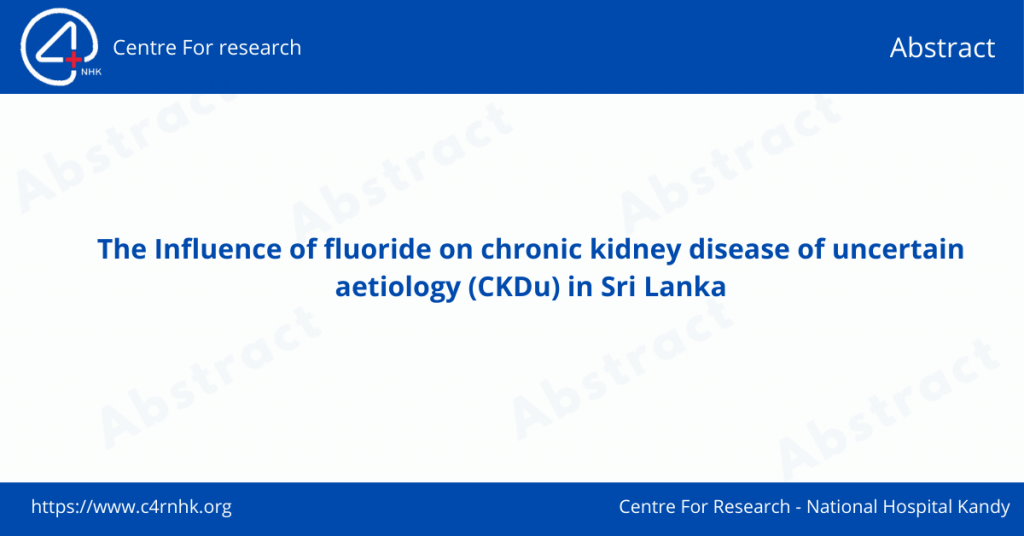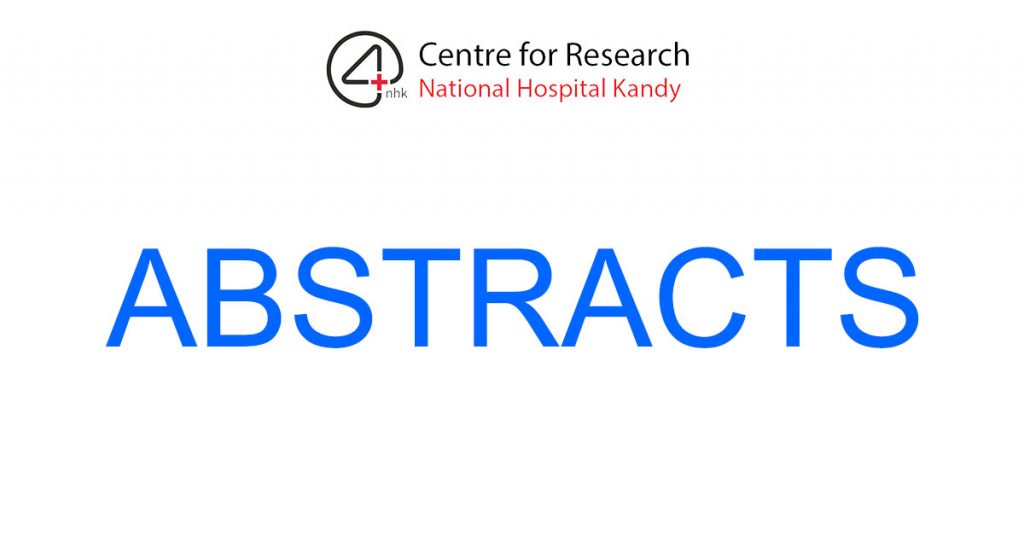Jennifer Pett1,2, Christine Linhart1*, Nicholas Osborne1,3*, Stephen Morrell1, Mohammed Fahim4,5, John Knight1,2, Shakila Premaranthne6,7, A. W. M. Wazil8, Neelakanthi Ratnatunga9, Sulcochana Wijethunga9, Shenal Thalgahagoda10, Zoltan Endre5,11, Richard Taylor1 and Nishantha Nanayakkara8
1 School of Population Health, University of New South Wales, UNSW, Sydney, Australia.
2 The George Institute for Global Health, Sydney, Australia.
3 School of Public Health, University of Queensland, Herston, Australia.
4 South Asian Clinical Toxicology Research Collaboration, Faculty of Medicine, University of Peradeniya, Peradeniya, Sri Lanka.
5 School of Clinical Medicine, Faculty of Medicine and Health, UNSW, Sydney, Australia.
6 Department of Microbiology, Faculty of Medicine, University of Peradeniya, Peradeniya, Sri Lanka.
7 Centre for Research, Nephrology and Kidney Transplant Unit, National Hospital, Kandy, Sri Lanka.
8 Nephrology and Kidney Transplant Unit, National Hospital, Kandy, Sri Lanka.
9 Department of Pathology, Faculty of Medicine, University of Peradeniya, Peradeniya, Sri Lanka.
10 Department of Paediatrics, Faculty of Medicine, University of Peradeniya Teaching Hospital, Peradeniya, Sri Lanka.
11 Department of Nephrology, Prince of Wales Hospital, Randwick, Sydney, Australia.
Abstract
Background
Chronic kidney disease (CKD) is a significant clinical challenge in Sri Lanka. The present study presents histopathological diagnoses from native renal biopsies in Kandy District, 2011–2020.
Methods
Reports of 5,014 renal biopsies principally performed at Kandy Teaching Hospital over 2011–2020 were reviewed. After exclusions for post-kidney transplant biopsies (1,572) and those without evident pathology (347), 3,095 biopsies were included. The predominant histopathological entities were grouped and categorised according to diagnosis and stratified by age and sex.
Results
The main histopathological entities (all biopsies) were tubulointerstitial nephropathy (TIN) 25% (n = 760), glomerulonephritis (GN) 15% (467), lupus nephropathy 14% (429), focal segmental glomerular sclerosis (FSGS) 10% (297), and IgA nephropathy (IgAN) 8% (242). For adult women ≥ 15 years, the main histopathological entities were lupus nephropathy 24% (325), TIN 17% (228), and GN 16% (217). For adult men ≥ 15 years, the main histopathological entities were TIN 34% (449), GN 14% (180), and IgAN 10% (125). The proportion of TIN in the present study was higher than international studies of a similar size.
Conclusion
This is the largest study of renal biopsies reported from Sri Lanka to date. TIN was the most common diagnosis in adults ≥ 15 years at 25%. Notable sex differences showed TIN was the most common histopathology in men (34%) but not in women (17%). No previously published similar study of this size has found TIN as the predominant diagnosis amongst renal biopsies in men. Further research is required into the possible causes of these observations in Sri Lanka.
Clinical Trial Number.
Not applicable.
![]()


